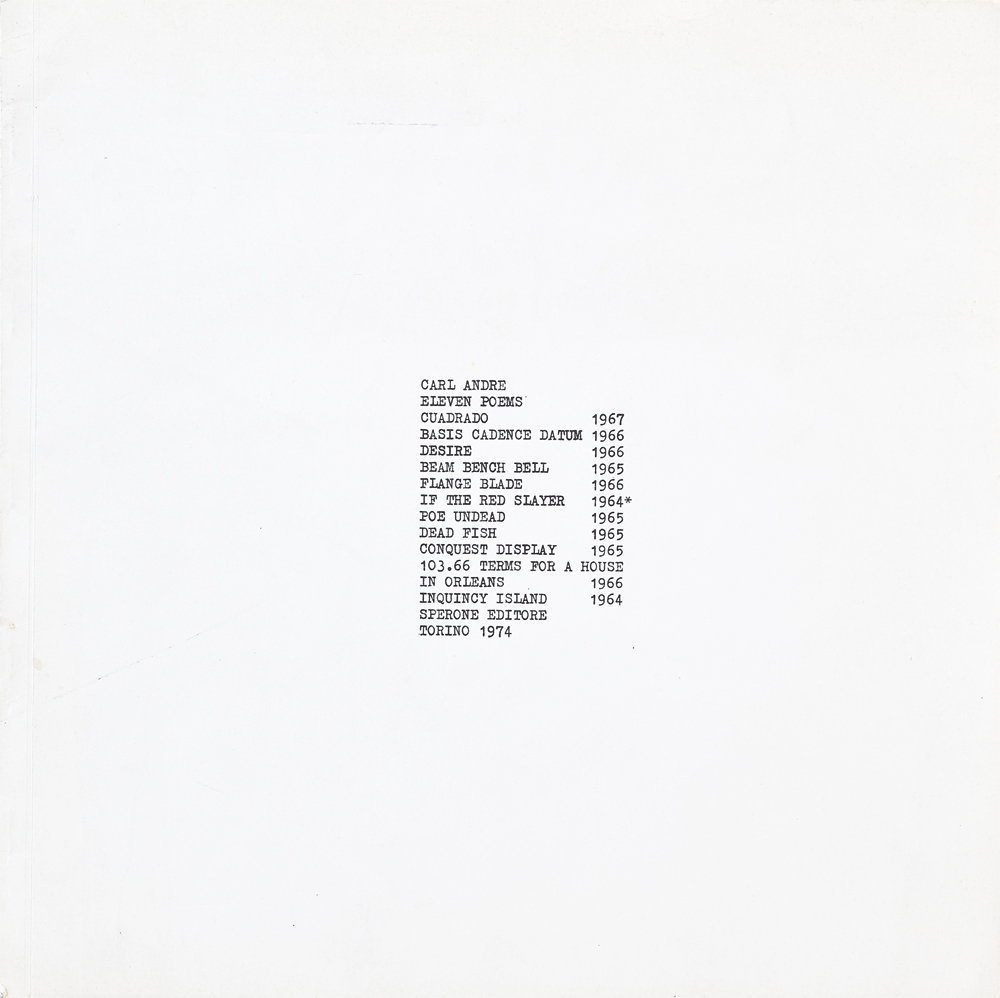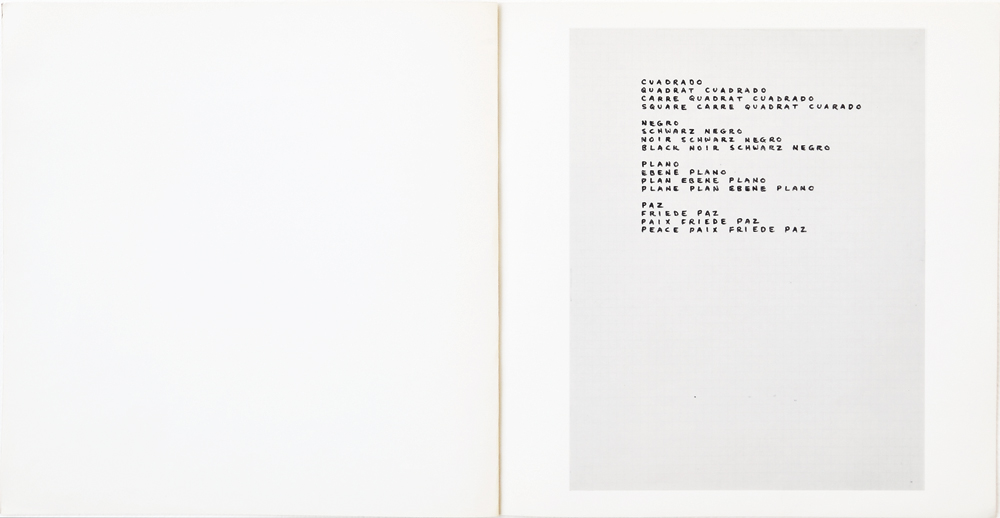ANDRE Carl
(Quincy, Massachusetts 1935)
Eleven poems
Luogo: Torino
Editore: Sperone Editore
Stampatore: Tipografia Petrino - Torino
Anno: 1974 (aprile)
Legatura: brossura con lievi macchie sul margine interno della copertina posteriore.
Dimensioni: 30,7x30,7 cm.
Pagine: pp. [24]
Descrizione: libro d’artista illustrato in copertina con i titoli degli undici poemi e 11 tavole stampate in bianco e nero al solo recto con la riproduzione fotografica di ciascun poema nella stesura originale manoscritta. Questi poemi si caratterizzano per l’assenza di punteggiatura e l’orientamento irregolare delle lettere, la disposizione dei testi è ordinata prevalentemente in uno spazio rettangolare mentre in alcuni casi si articola in blocchi di parole che compongono figure geometriche più complesse.Lieve abrasione in copertina. Tiratura di 1.000 esemplari. Prima edizione.
Bibliografia: Delcroix 2011: pag. 86 con illustrazione e pag. 423; Lailach 2005: pag. 87
Prezzo: € 1100ORDINA / ORDER
TRANSLATION: ANDRE Carl (Quincy, Massachusetts 1935), Eleven poems, Torino, Sperone Editore, [Printer: Tipografia Petrino - Torino], 1974 (April), 30,7x30,7 cm., paperback, faintly stained on margin of back cover, [24] pp., Artist’s book, illustrated cover depicting the titles of the eleven poems, 11 b/w plates reproducing the original manuscript of each poem. The poems are characterised by the lack of punctuation and by the irregular letters orientation; the texts are mainly organised in the shape of a rectangle, but some of them groups of words compose more complex geometrical shapes. Cover slightly scratched. Edition of 1,000 copies. First edition.
"An observable connection exists between Carl Andre’s minimalist sculpture and his poetry. Just as the sculptor famously abandoned welded, relational and vertical sculpture in favor of standardized elements placed on the floor, the poet approaches language as a concrete, complex matter that can be broken down to single units and then reordered in non-hierarchical, non-relational ways. Dismissing punctuation, Andre juxtaposes words, stacks them in columns or places them in patterns, thus creating resonant connections and calling attention to the poem’s space: the field of the white page” (www.paulacoopergallery.com). "My poems are clastic textiles. That is, my poems are reweavings of fragments of pre-existing texts, mostly not by me. I do not, in my poetry, try to find the words to express what I want to say. In my poetry, I try to find ways to express what the words say” (Carl Andre, May 21, Glares, 2005).


